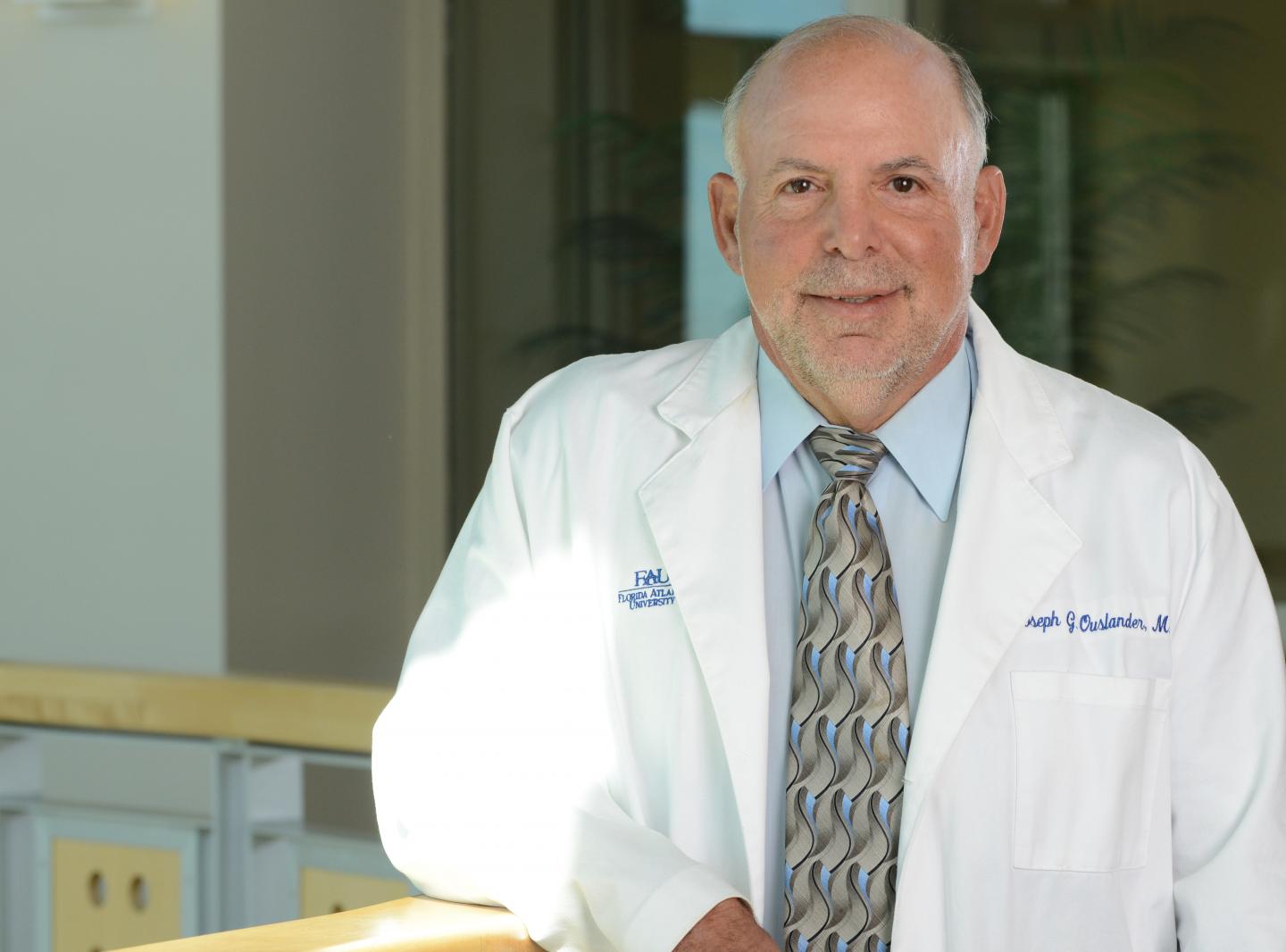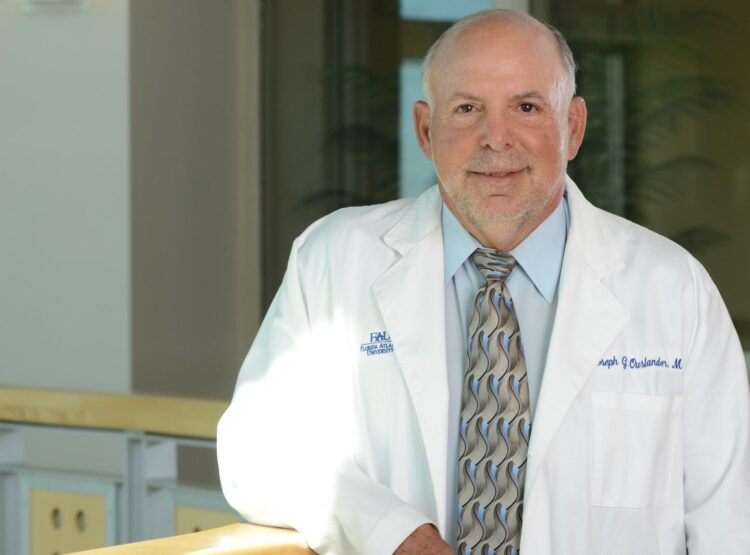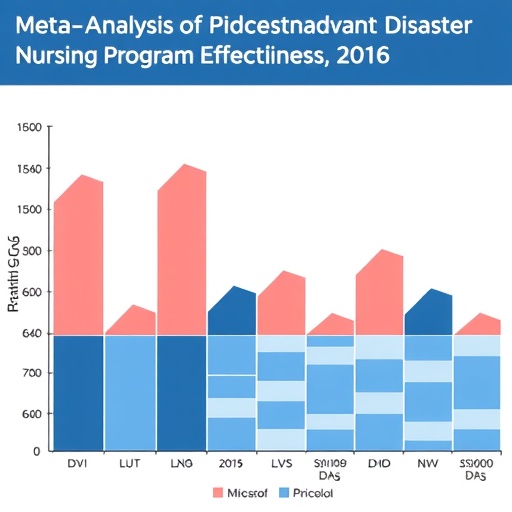Leading geriatrician provides key updates and resources for front-line nursing home staff and clinicians

Credit: Florida Atlantic University
As the coronavirus disease (COVID-19) pandemic advances so does the uncertainty and evolution of the pandemic as it relates to nursing homes and long-term care facilities (LTCF). Early reports suggest the case fatality rate for those over 80, which constitutes nearly half of LTCF residents, is more than 15 percent. In areas where there is a shortage of ICU beds and respirators, even the most carefully thought out ethical approaches to rationing these resources will place older patients at a lower priority. LTCFs must be prepared to manage patients who have had or have COVID-19 infection.
In an editorial published in the Journal of the American Geriatrics Society, Joseph G. Ouslander, M.D., an internationally renowned geriatrician, a professor of geriatric medicine, and a senior advisor to the dean at Florida Atlantic University’s Schmidt College of Medicine, provides key updates and resources for front-line nursing home staff and clinicians.
“Until more rapid COVID testing is available to enable us to test all nursing home patients and staff, cases of COVID-19 infection are likely to continue to increase in the long-term care facility setting,” said Ouslander. “To complicate matters, long-term care facilities will be asked to accept patients with possible or known COVID-19 from hospitals if the local or state government has not required the suspension of admissions during the presence of active COVID-19 cases.”
Ouslander recommends developing an emergency plan that addresses patient/resident placement and staffing considerations before a cluster infection or outbreak occurs; employing intensive infection control practices; behaving as if all patients and staff are potentially infected with the virus; and continuing to carefully screen staff, recognizing that some may be asymptomatic carriers of the virus and pass the screening.
In addition to restricting visitors, communal dining and cancelling other group activities, Ouslander advises providing therapy in the patient/resident room when feasible; if not, then safe social distancing should be used in therapy areas. Staff should wear plain surgical masks at all times and use N95 masks if available when performing high-risk procedures such as respiratory treatments. Full personal protective equipment (PPE) should be used when appropriate and available based on patient/resident symptoms and signs.
Staff who are quarantined based on symptoms and want to return to work must be tested to confirm they are not shedding the virus; returning health care workforce should be a priority for rapid testing. In addition, clinicians should monitor vital signs at least daily and more frequently if indicated; and even subtle changes in a patient’s condition should be taken seriously and further evaluated when clinically indicated.
Because LTCF patients/residents cannot have visitors or participate in group activities, their isolation may have adverse effects on their mental health. Morale of staff may also be affected. Experience in China suggests that half or more of health care workers treating patients with COVID-19 infection had symptoms of depression, anxiety, insomnia or distress. Ouslander suggests that LTCFs provide as much psychosocial care and support as feasible and use social media and video phone call options. Grief counseling for families and staff, as well as assistance with burial arrangements may be needed.
In the United States, of the approximately 1.2 million registered nurses employed outside of hospital settings, 24 percent are ages 55 to 64 years and 5 percent are age 65 years or older. Of the approximately 1.2 million physicians, an estimated 230,000 (20 percent) are ages 55 to 64 years and an estimated 106,000 (9 percent) are age 65 years or older. Many hospitals and health care systems are developing strategies to use these health professionals in productive ways that may not necessarily involve direct patient contact. The U.S. Centers for Medicare and Medicaid Services has issued many waivers that could help bolster the health care workforce and the capacity of the nation’s health care system to care for older COVID-19 patients.
“During this challenging and unprecedented pandemic of our lifetimes, we should be thankful for all of the front-line nursing home staff and clinicians who are risking their health and that of their families to care for the most vulnerable among us,” said Ouslander. “Shortages of these professionals are anticipated, and the aging of our health care workforce makes many of us even more susceptible to acquiring COVID-19 and its complications. We all have a role to play, and we should support our geriatric health care workforce, our patients, and their families in whatever ways we can contribute to meet this daunting challenge.”
###
About the Charles E. Schmidt College of Medicine:
FAU’s Charles E. Schmidt College of Medicine is one of approximately 152 accredited medical schools in the U.S. The college was launched in 2010, when the Florida Board of Governors made a landmark decision authorizing FAU to award the M.D. degree. After receiving approval from the Florida legislature and the governor, it became the 134th allopathic medical school in North America. With more than 70 full and part-time faculty and more than 1,300 affiliate faculty, the college matriculates 64 medical students each year and has been nationally recognized for its innovative curriculum. To further FAU’s commitment to increase much needed medical residency positions in Palm Beach County and to ensure that the region will continue to have an adequate and well-trained physician workforce, the FAU Charles E. Schmidt College of Medicine Consortium for Graduate Medical Education (GME) was formed in fall 2011 with five leading hospitals in Palm Beach County. The Consortium currently has five Accreditation Council for Graduate Medical Education (ACGME) accredited residencies including internal medicine, surgery, emergency medicine, psychiatry, and neurology.
About Florida Atlantic University:
Florida Atlantic University, established in 1961, officially opened its doors in 1964 as the fifth public university in Florida. Today, the University, with an annual economic impact of $6.3 billion, serves more than 30,000 undergraduate and graduate students at sites throughout its six-county service region in southeast Florida. FAU’s world-class teaching and research faculty serves students through 10 colleges: the Dorothy F. Schmidt College of Arts and Letters, the College of Business, the College for Design and Social Inquiry, the College of Education, the College of Engineering and Computer Science, the Graduate College, the Harriet L. Wilkes Honors College, the Charles E. Schmidt College of Medicine, the Christine E. Lynn College of Nursing and the Charles E. Schmidt College of Science. FAU is ranked as a High Research Activity institution by the Carnegie Foundation for the Advancement of Teaching. The University is placing special focus on the rapid development of three signature themes – marine and coastal issues, biotechnology and contemporary societal challenges – which provide opportunities for faculty and students to build upon FAU’s existing strengths in research and scholarship. For more information, visit http://www.
Media Contact
Gisele Galoustian
[email protected]
Related Journal Article
http://dx.





